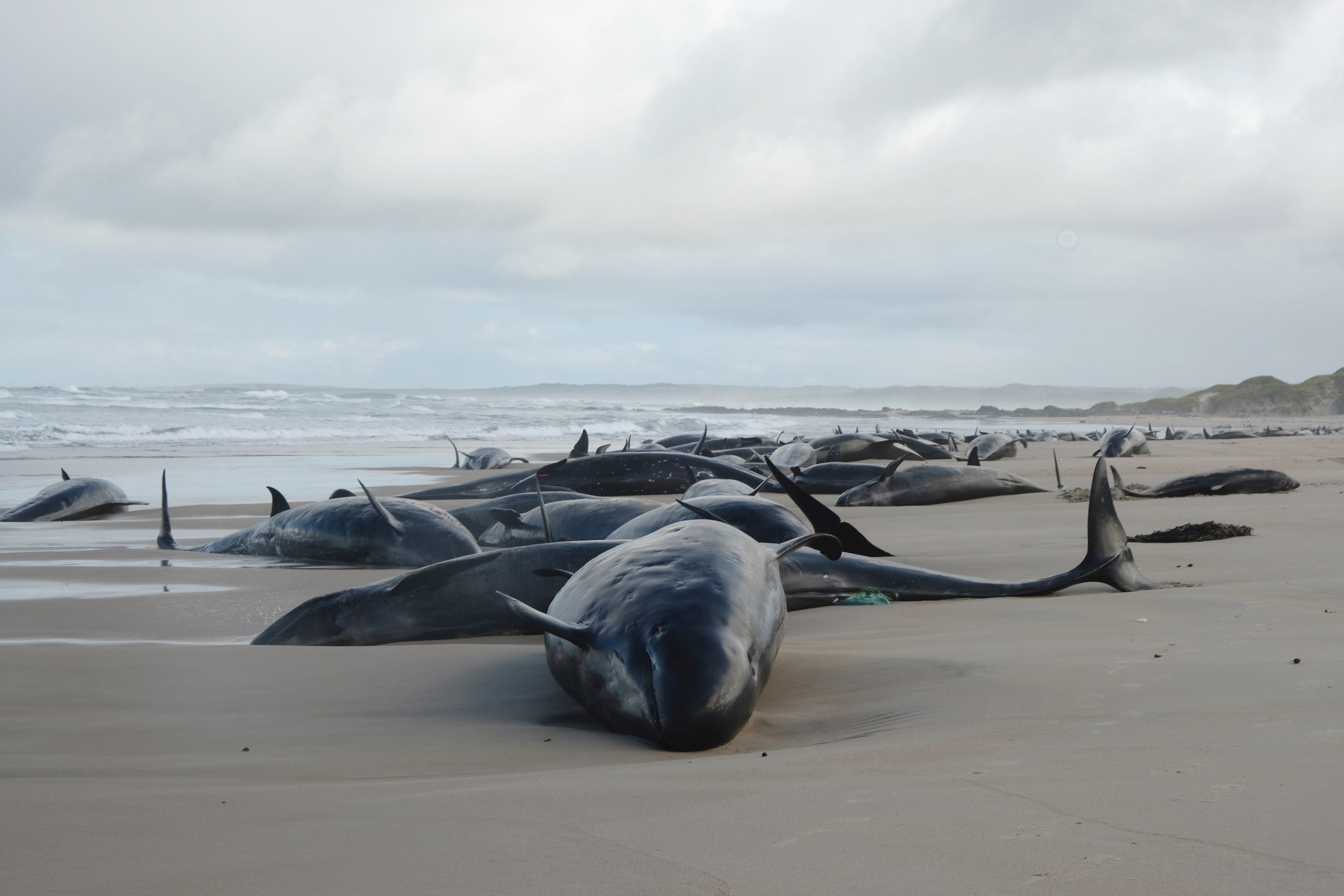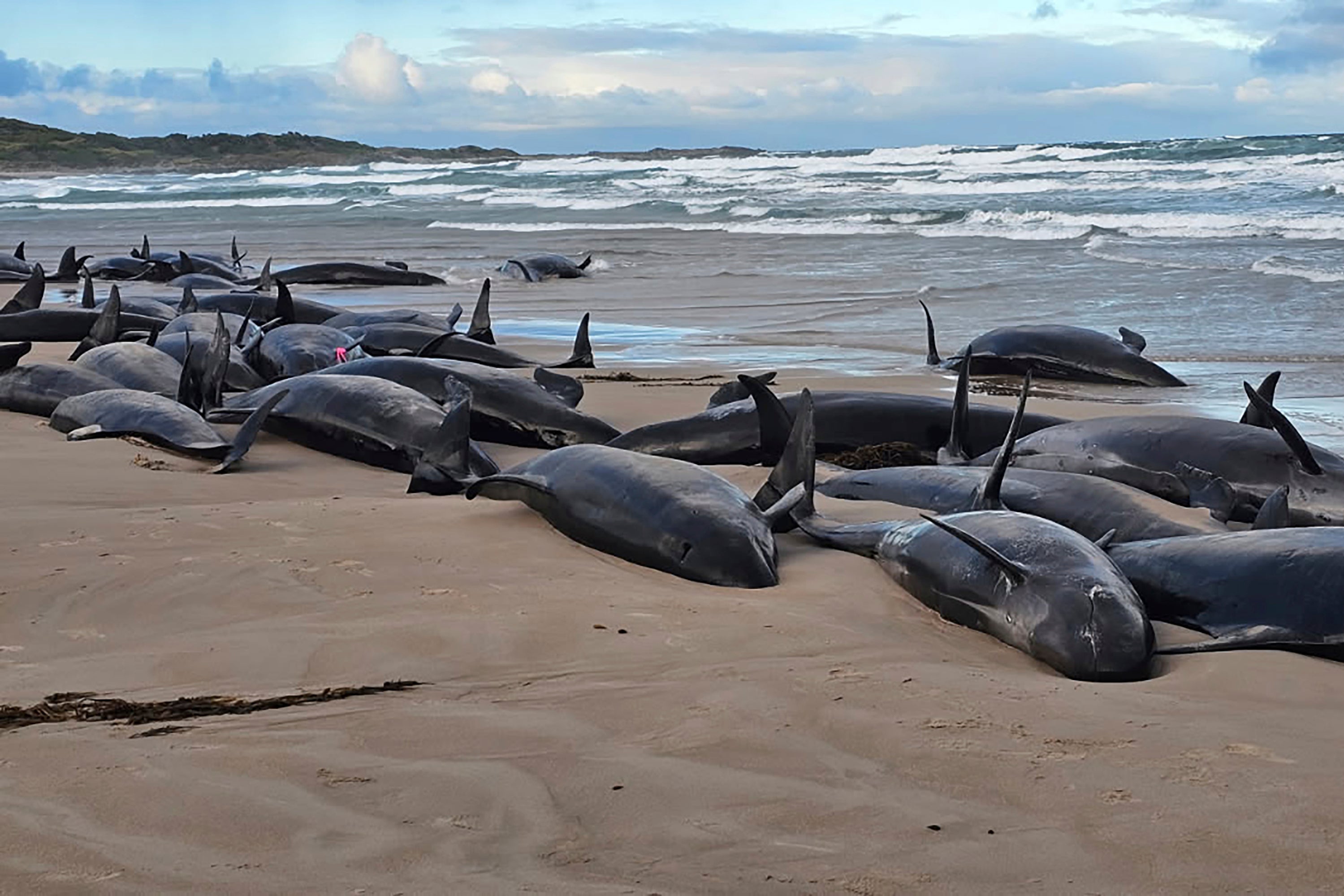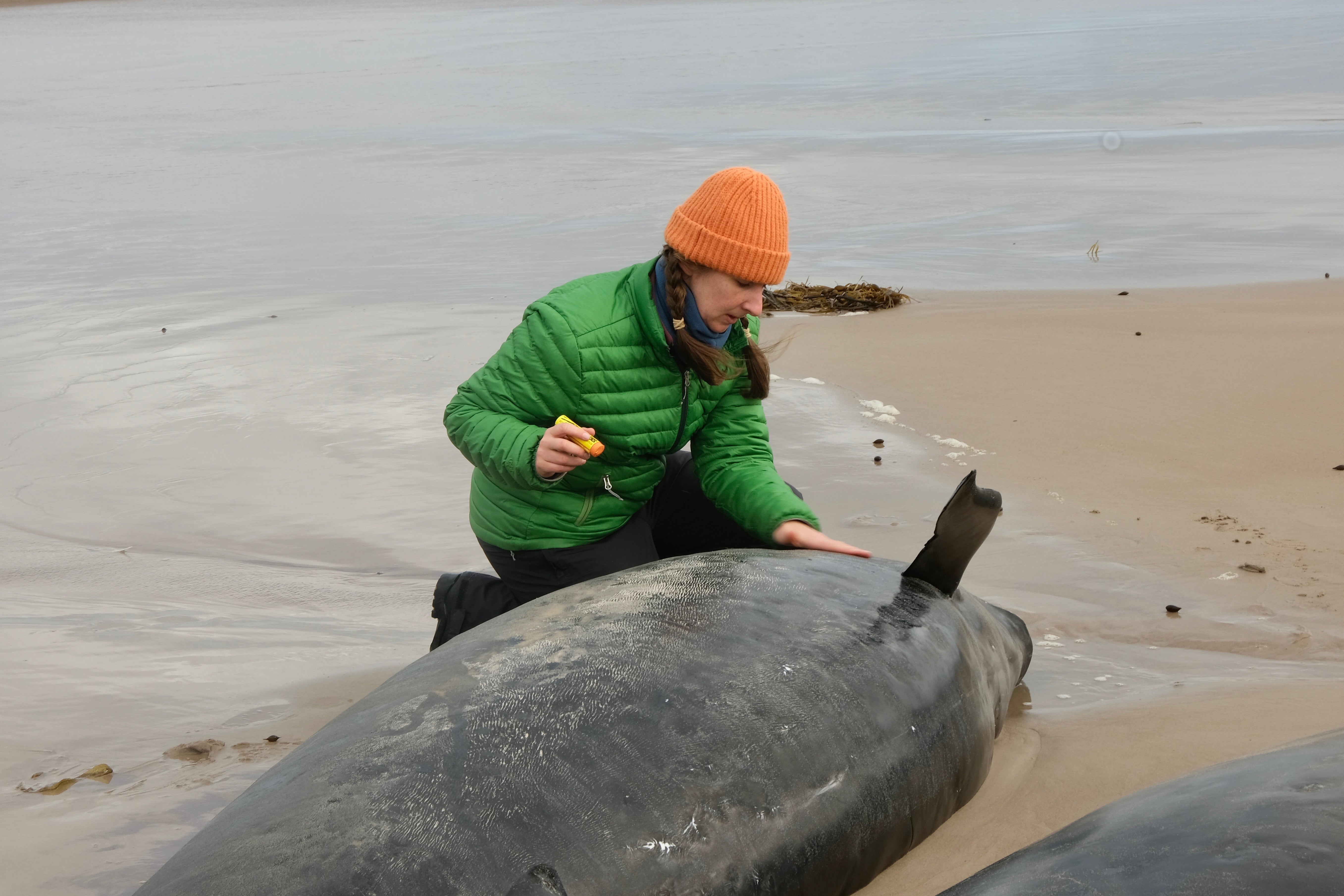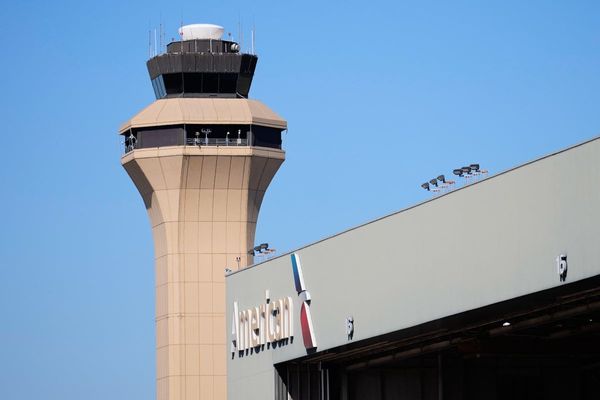More than 150 false killer whales have been stranded on a remote beach near Arthur River in Tasmania.
Wildlife officials confirmed that 90 of the 157 animals were still alive but noted that refloating efforts would be extremely difficult due to rough ocean conditions and the site’s inaccessibility.
“Our mass stranding events usually involve pilot whales. However, these are false killer whales, and it is our first large mass stranding of these animals in around 50 years,” Brendon Clark from Tasmania Parks and Wildlife Service (PWS) said on Wednesday. The cause of the stranding remains unknown.

Mr Clark estimated on Wednesday morning that the false killer whales had been stranded for 24 to 48 hours.
Despite its name, the false killer whale is a highly sociable species of dolphin. These animals, which can grow up to 6m long, live in large pods, making them more susceptible to mass strandings.
Tasmania Parks and Wildlife Service officials are assessing the situation and prioritising the survival of those with the best chance of rescue.
“We have approximately 200m of surging tidal waters, a breaking surf, and so to try and refloat the animals directly back into that surf would be challenging,” Mr Clark said.
“At this stage, we do not know why these animals have stranded,” he said.
Around 470 pilot whales stranded at Macquarie Harbour near Strahan in Tasmania’s west coast in 2020, followed by another 200 in the same area in 2022.

Mr Clark said that, unlike those previous incidents, the remote location of Arthur River made it impossible to move the necessary equipment in time to refloat the false killer whales.
“Here on this exposed beach on Arthur River it’s simply not an option,” he said.
“To try and refloat the animals directly back into the surf would be challenging, and then of course it would present enormous safety risks for our staff and personnel.”
“The team on the ground will conduct post-mortem investigations and sampling of deceased animals in an attempt to determine a reason behind the stranding,” Mr Clark said.
He said PWS was “hesitant” to use machinery to move the carcasses due to the remote location and nearby Aboriginal cultural heritage sites. The best method for disposal had yet to be decided.
“It may be a case of the carcasses remaining in situ and letting nature run its course,” he said.
The public has been advised to stay away, especially due to an active bushfire nearby.

“All whales are protected species, even once deceased, and it is an offence to interfere with a carcass.
“These are large animals potentially in their death throws, and they could be writhing and moving around on beaches,” Mr Clark said.
“The likelihood of somebody being injured or severely impacted by an animal of that size, obviously increases when you’re dealing with them in close contact.”
Dr Vanessa Pirotta, wildlife scientist and science communicator, said: “The moment a whale or dolphin strands, the clock of survival starts ticking. The longer they remain on land, the less of a chance they may have to be successfully returned.”
She added: “We don’t yet understand why whales and dolphins strand. Tasmania has proven to be a hotspot location for seeing mass strandings like this. Perhaps it’s the geographical location, which makes it difficult to navigate around. This is just one of many theories that may help understand why this happens.”







